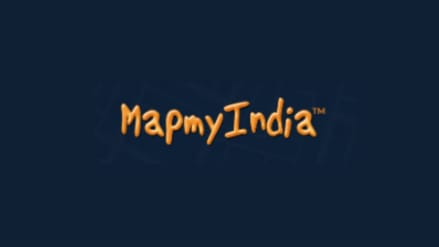A couple of months back Google slashed the price of its Maps APIs (application programming interface) for developers by up to 70%. Ahead of that Ola Maps had made an entry into the market and was offering its APIs for free. While Google’s response may have appeared to be an immediate reaction, experts believe the timing was simply co-incidental and that the company had planned the price cut.
Either way, Rakesh Verma co-founder, chairman and managing director, MapmyIndia is unfazed. The impact of Google’s price cuts on his company, he says, is “minimal”, he explains pointing out the cuts have been made just for three APIs amongst the hundred that are available. Moreover, the cut is up to 70% for most, not 70% for all. “The raw API business accounts for less than 10% of our revenues so even we lose 10% of this, we can try and recoup it elsewhere,” Verma says.
Nonetheless, Google India has been introducing few new features and even Verma concedes, it is a formidable player. As he says, the consumer mapping space has historically seen many domestic players come and go but the one player that has stayed on is Google.” They have become more popular,” he says. He is not so sure about Ola Maps. “I would put them (Ola Maps) in the category of those ten to fifteen companies which entered the consumer mapping space and vanished,” he says.
He could be right because experts point out that quality, accuracy, reliability as well as maturity are critical to be able to operate in the mapping space and Ola’s reputation is mixed. “Lately, many Ola Maps users have reported problems relating to routing especially on long routes and higher charge for the trips,” says an industry expert.
Google, on the other hand, is doing well and has introduced several new features such as real-time weather alerts, street view, narrow roads identification and so on. Verma claims MapmyIndia too has come up with Junction View, real-time alerts, etc way before the other competitors.
Indeed, Chandramouli Muthiah, Kota Yuzawa and Mrinal Maheshwari of Goldman Sachs believe the addressable market for the home-grown company’s services is “meaningful”. They highlight the emerging business segment in mobility, including software solutions like mapping SaaS services, fleet management solutions and hardware solutions like GPS trackers, dash cameras and assisted helmets. This, they say offers a market which, “over time could be larger than the current core automotive N-CASE (Navigation-Connected Autonomous Shared Electric) business.
In FY24, MapmyIndia had close to 880 B2B customers having built up a good presence in the space. It is largely playing the B2B mapping space and has sewn up partnerships with car makers such as Hyundai, Kia, Maruti, Tata, Mahindra, Skoda, among others.
Experts say the company has a growth lever in a pick-up in business from Hyundai and Kia as also faster-growth in the Internet of Things (IoT) business. Moreover, there’s also potential in any increase in the adoption of EV-led N-CASE (Navigation, Connected, Autonomous, Shared, and Electric). As Shobit Singhal and Pranay Shah at Anand Rathi, point out pricing action by large global mapping players as also a discontinuation or non-renewal of existing OEM contracts, are risks.
But, the analysts at Goldman Sachs believe MapmyIndia is well-poised to benefit from its early leadership position in fast-growth end-markets including automotive navigation, mapping devices, connected vehicles, telematics and government digitisation. “The core profit pool for the company lies in its IP-protected digital mapping service built over more than three decades and overlaid with valuable data–demographics, law & order, natural resources, infrastructure, other insights—they opine.
The emergence of open-source maps, already being used by Ola, could be a risk to MapmyIndia’s addressable market opportunity. “Developers who are building on their apps will be able to customise based on their needs” said an expert. There is also the risk of OEMs switching to their own in-house mapping platforms. For instance, Ola Electric was using MapmyIndia’s maps for its built-in vehicle navigation but has now switched to its own maps developed in-house.” Open-source maps existed even before. They will continue, but what kind of quality it will give, that remains to be seen. We don’t see it as a threat,” Verma said.
In the B2C space, today, MapmyIndia, counts 24 million downloads of the Mappls app. However, the B2C space has seen limited monetisation opportunities largely because of Google’s dominance in the space and its earnings from advertising. Google, which dominates the Android eco-system in India, will probably always have an advantage in the maps space especially since, it pre-bundles its apps in smart phones. The verdict on whether this practice of pre-bundling might amount to alleged anti-competitive behaviour is still not in; the case is currently being heard in the supreme court. The Competition Commission of India, however, has levied a penalty of `1,338 crore on Google for pre-bundling.
Should the court verdict—-on the pre- bundling of apps in smartphones—go against Google, it might lose some market share. But even then experts are not sure the share loss will be significant. As Faisal Kawoosa, chief analyst at Techarc says, “even if Google Maps is de-coupled from pre-installation in phones, people are likely to opt for Google Maps because of user interface, convenience and comfort”. Kawoosa’s analogy is drawn from the fact that even though Google de-coupled the search engine Chrome from smartphones, consumers continue to prefer Chrome. For the moment though MapmyIndia on good ground; the maps war will play out between Google and MapmyIndia.
